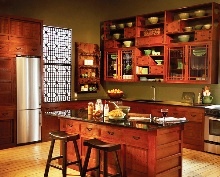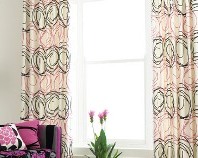Ways to Tell If Your Collectible Is Really Silver
 August 3, 2011
August 3, 2011 
Nova Bronstein - Sometimes curiosity gets the best of you, sidetracking you to follow an irrational thought to a rewarding path ... you hope ... and this was certainly the case last Friday. A friend of mine came to me inquiring about a slim silver-tone bracelet that was given to her. She wanted to know if this lovely present was actually made of silver or not. And I realized that I didn't have an easy answer for her. Determined to remedy this, the two of us set on a quest for practical tests to find out if something is truly silver.
Test #1: Acid
This test called for Nitric Acid, which, as I'm sure you could guess, we did not have on hand. Just to give it a shot we tried this test, substituting lemon juice instead of the Nitric Acid. The results are supposed to be that for 100 - 90% silver objects, a drop of acid will turn milky in color when it comes in contact with silver. This proved very disappointing. Our results were nearly indistinguishable from a regular drop of water on silver. (Test found here.)

Test #2: Magnets
The next test seemed more promising and ... we hoped ... more conclusive. Only iron-based metals, known as ferrous metals, are magnetic. Therefore, any solid silver item should not react when coming in contact with a magnet. Doing this test, we did get the hoped-for result, getting no magnetic reaction. The problem was that there is something profoundly unsatisfying about a test that results in no response. And, even if the object was made of copper and plated with silver, the outcome of this test would have been the same.
So we were left feeling unconvinced and continued searching for a test which clearly communicated a positive reaction. On to the next test!
Test #3: Silver rings like a bell
This test sounded promising, but after attempting to "ring" the silver bangle with a pen, the graphite tip of a pencil (no really - we were instructed to try this!), and a wooden take-out chopstick and getting nothing more compelling than a single note "thud," we moved swiftly onto the next test.

Test #4: The excellent conductivity of Silver
It figures, of course, that the most satisfying of our tests was the last one we tried, utilizing the high conductivity inherent to silver. This test uses simply an ice cube to test the metal's reaction and was so clear and conclusive that the difference from the others was like night and day. The object should become notably cold to the touch: 5 - 10 seconds for solid silver versus around 30 seconds for a plated object. So we went ahead with the ice cube, resting the bottom edge of the bracelet on top of a 2-inch ice cube. Within seconds of the ice cube coming into contact with the skinny band of metal you could feel cold creep up the object and travel all the way to the portion of metal held by our fingers! Success!
This test was shared by James Chunn of Thedore, Alabama, and can be found HERE!
If you have a test for identifying silver we would love to hear about it! Please leave your test of choice as a comment below.
This article was reprinted by permission of the Sheffield School in New York. Check out the newly launched Jewelry Design Course offered at the Sheffield School. With thousands of active students and more than 50,000 graduates, Sheffield has trained more design professionals than any other school in the world.
- Request a free Sheffield School catalog describing their distance education courses.
- Subscribe to the Sheffield Designer newsletter.
 silver,
silver,  tests in
tests in  Sheffield School,
Sheffield School,  collectibles
collectibles 












Reader Comments